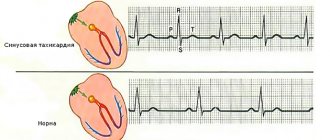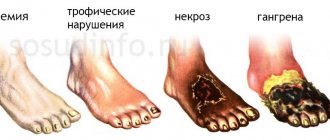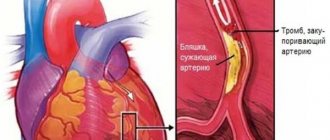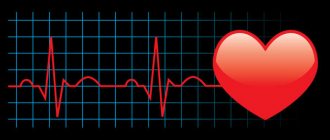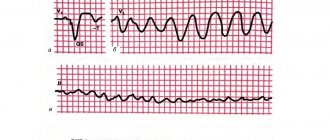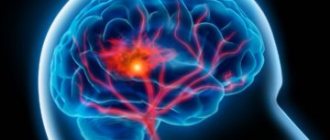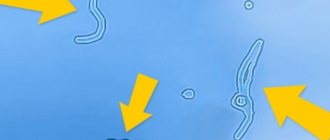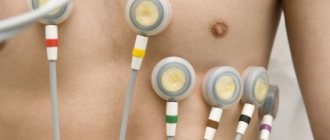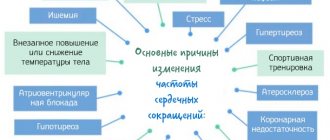Definition of the concept
Cardialgia (a description of the symptoms of the disease, treatment is presented below) is pain that occurs in the left side of the chest, which is not associated with damage to the coronary (that is, its own) vessels of the heart. That is, this is not a separate nosological unit, but a sign of various pathologies that have both cardiac and extracardiac origin.
Most often, such pain does not pose a threat to life, however, it significantly worsens its quality.
Tests and diagnostics
Working with patients who complain of chest pain begins with excluding life-threatening and acute diseases:
- acute coronary syndrome;
- microvascular angina;
- vascular spasm;
- aortic dissection or coronary artery disease;
- microvascular disease;
- pericarditis;
- drug-induced diseases;
- autoimmune pathology;
- cardiac tamponade;
- acute heart failure ;
- pulmonary embolism;
- pneumothorax;
- pneumonia;
- esophageal rupture, etc.
When assessing the condition of a patient with cardialgia in the emergency department, they are initially guided by the stability of hemodynamic parameters. A clinical examination and history taking allows us to determine the presence of edema, the location of pain, and its nature. When assessing hemodynamic stability, it is necessary to confirm or exclude life-threatening conditions. In any patient, respiratory and circulatory function is assessed, an ECG, biochemical blood test, chest x-ray and echocardiography are performed as necessary.
In an outpatient setting, a detailed history and physical examination data are important, which help determine the further diagnostic search. If a cardiogenic pain syndrome is detected, the patient is subject to a thorough examination by a cardiologist in an outpatient or hospital setting, depending on the prognosis of the disease and the severity of the condition. If the pain syndrome is associated with damage to the digestive tract, mental disorders, or damage to the musculoskeletal and respiratory systems, then the patient is referred according to the profile to the appropriate specialist for selection of therapy and further observation.
It is quite difficult to recognize and differentiate non-cardiac chest pain, and if the diagnostic search is stopped prematurely, especially in people with mental disorders, the risk of developing serious pathology, including diseases of the cardiovascular system, increases significantly. For timely diagnosis of psychogenic cardialgia, it is important to remember the peculiarities of its clinical course and adequately assess the patient’s psychovegetative background.
Causes and classification
Cardialgia is classified (for a description of the symptoms of the disease, see below) according to the diseases in which they occur:
- Cardiogenic. That is, developing for reasons hidden in diseases of the heart (but not its blood vessels). In this case, cardiac pathologies can be inflammatory (pericarditis, myocarditis), metabolic (endocrine disorders, alcoholism, protein deficiency, menopause, etc.) and hypertrophic (enlargement of the heart) in nature.
- Due to diseases of the spine, ribs and intercostal nerves located near the heart. Such pathologies include: cervicothoracic osteochondrosis, various injuries and diseases of the ribs and pectoral muscles, intercostal neuralgia, inflammation of the nerve bundles in the area of the shoulder joint.
- Due to neurocirculatory dystonia (occurs in most cases).
- As one of the symptoms of gastrointestinal diseases (ulcers, esophagitis, hiatal hernia, chronic cholecystitis, abdominal injuries).
- Occurring in pathologies of the pleura or lungs (in cases of left-sided lesions).
In addition, cardialgia is divided into psychogenic and vertebrogenic.
Consequences and complications
Complications and consequences directly depend on the cause that caused cardialgia. There are diseases that have a favorable course: a disorder of the nervous system or osteochondrosis. Other diseases worsen health and can lead to death.
For example:
- Lung tumors cause difficulty breathing and hemorrhage into the chest cavity;
- Inflammation of the heart muscles causes abnormal heart rhythm;
- An ulcer can lead to ulcerative bleeding.
Clinical manifestations
Cardialgia, the symptoms of which are not accompanied by a feeling of tightness in the chest, manifests itself as follows:
- pain that occurs in the cervical and occipital regions, as well as in the chest;
- darkening of the eyes;
- swallowing disorders;
- anxiety;
- inability to take a full breath, feeling of lack of air;
- sleep disorders;
- pain often occurs without any physical (exertion) or psychological (stress) reasons;
- a state of rest does not bring relief;
- in some cases, convulsions and lightheadedness occur.
Features for various pathologies
The presence of symptoms during cardialgia that manifest themselves at rest often indicates the presence of neurocirculatory dystonia in the patient. At the same time, in addition to the pain in the chest, there is a feeling of constant fatigue and the inability to fully inhale. In addition, the pain in the heart is quite long-lasting.
In cases where cardialgia is associated with disorders in the cervical-brachial area, painful sensations occur in the left arm and the corresponding half of the chest. In this case, pain appears when trying to lift a weight or simply raise your arms up.
If a patient has herpes zoster or intercostal neuralgia, the pain is acute, lasts a long time and is not relieved by taking even strong analgesics.
Cardialgia, the symptoms of which are described above, may be a manifestation of Tietze syndrome, characteristic of patients over forty-five years of age. This disease is characterized by thickening of the costal cartilages. However, the pain is easily relieved with the help of non-steroidal anti-inflammatory drugs.
A variety of infectious pathologies, ailments of the digestive organs, and menopausal hormonal imbalances also often lead to pain in the heart.
The consequences of cardialgia depend on the pathology that caused it. For example, untreated myocarditis can lead to cardiosclerosis, thrombosis, heart failure, and osteochondrosis can lead to motor (walking, bending, and so on) disorders, including disability.
Classification by shape
Non-coronary heart pain is divided into two types, depending on the pathogenesis. Both of these forms pass without disruption of myocardial function.
Psychogenic
Functional cardialgia is registered in a patient if the examination does not reveal any damage to the structure of the heart muscle and coronary vessels. Then the most likely etiology of the disease is considered to be a psychogenic factor. It is usually observed in young people with vegetative-vascular dystonia (VSD).
The psychogenic form develops against the background of:
- long-term stress, depression;
- poor nutrition;
- disturbances in sleep and rest patterns;
- increased physical activity.
Adolescent girls with a neurotic character are especially susceptible to the psychogenic type of the disease.
Such patients develop cardioneurosis - chest pain, rhythm disturbances against the background of nervous breakdowns and psycho-emotional shocks. Psychovegetative disorders in the stage of vegetative crisis (panic attacks) are often accompanied by tachycardia, hypertensive crisis and pain in the heart.
Symptoms of cardioneurosis:
- sore skin in the area of the left chest;
- tingling, burning in different parts of the body;
- throbbing pain in the projection of the heart;
- general weakness, faintness.
Patients often mistake such sensations for true pain in the heart, as a result of which they develop cardiophobia. They are afraid of dying from a heart attack or cardiac arrest.
Vertebrogenic
Vertebrogenic cardialgia develops against the background of diseases of the upper spine.
When the nerves of the cervical vertebrae are pinched, the pain spreads to the myocardium and large vessels leading to the ventricles. Because of this, a person has a feeling of compression or pressure in the heart area.
A common cause of this type of disease is osteochondrosis. It develops due to the fact that a person sits or lies uncomfortably for a long time.
With this pathology, the intervertebral discs of the cervical spine take on an incorrect position.
Blood circulation is disrupted, nerve fibers are pinched. This leads to painful sensations projected to the myocardial region. Pain appears when changing body position, turning the head, raising the arms.
Cervicobrachial syndrome causes similar symptoms. It is characterized by damage to the cervical roots and brachial plexus. This disease is typical for older people.
In addition to pain in the sternum, patients experience swelling and numbness in the left arm.
Falconer-Weddell syndrome, a costoclavicular pathology expressed in a narrowing of the space between the collarbone and the first rib, can also cause cardialgia. The rib compresses the neurovascular bundle in the left arm, causing pain in it and the left side of the chest.
Psychogenic cardialgia: symptoms and treatment
This type of cardialgia develops as a result of depression or stress. With psychogenic cardialgia, the symptoms are pulsating and constant.
Patients note pain and burning in the cardiac zone, as well as in the left hypochondrium. In this case, there may be either a feeling of fullness or emptiness in the chest.
In addition, patients often indicate increased sensitivity of the skin of the left nipple.
Psychogenic cardialgia, the symptoms of which are somewhat different from those of pathologies of other origins, may be accompanied by irradiation of pain to the spine, lower back, neck and genitals. In addition, the pain is often combined with tingling, tingling, crawling and other unpleasant sensations.
Treatment of this form of the disease comes down to eliminating the main etiological factor (that is, stress and depression), carried out by prescribing antipsychotics, antidepressants, and so on.
Vertebrogenic type
Patients are often interested in: vertebrogenic cardialgia, what it is, what the symptoms are and how it manifests itself.
This type of disease is a consequence of damage to the cervical segment of the spinal column. In this case, pain occurs due to compression of the nerve roots emerging from this area of the spine. These nerve fibers reflexively affect the heart and its coronary (own) arteries, which is why aching or pressing pain appears in the area where the heart muscle is located.
Doctors point out that cardialgia is a symptom of such a common pathology as osteochondrosis, the progression of which is accompanied by the replacement of intervertebral cartilage with bone tissue. As a result, the blood flow is disrupted, and the pressure on the exiting nerve fibers increases significantly.
Another etiological factor (but in more rare cases) of vertebrogenic cardialgia is spondyloarthrosis. The mechanism of development of the disease is as follows: hyaline cartilage becomes deformed and becomes inflamed. As a result of the inflammatory process, bone growths are formed, putting pressure on the spinal nerve roots.
ICD 10. CLASS IX. Diseases of the circulatory system (I00-I99)
Diseases of the peripheral nervous system are caused by pathology of the spinal cord and the nerves (roots) extending from it. It is necessary to distinguish:
- vertebrogenic cardialgia caused by changes in the spine due to osteochondrosis;
- radiculitis - inflammation of the outgoing roots;
- plexitis - inflammation of the nerve plexus in the front of the shoulder joint;
- myositis - damage to nerve endings in muscles.
Osteochondrosis of the cervicothoracic spine with the growth of bone spines on the processes, compression of the intervertebral disc is most often the cause of radiculitis pain.
Nerve roots are subject to mechanical irritation and give symptoms of cardialgia
The pain is characterized as:
- burning, similar to electric shock;
- spread along the left arm into the hand;
- provoked by changes in body position (bending, turning);
- worse when coughing, sneezing;
- may be accompanied by headaches and dizziness due to compression of the vertebral artery and cerebral ischemia;
- in the area of the changed vertebrae there is a decrease in skin sensitivity.
Plexitis is accompanied by the spread of pain along the anterior surface of the chest in the upper part from the subclavian region down and along the left arm. The limb is limited in movement due to severe pain; it is especially difficult to lift the shoulder up and move the outstretched arm back.
Intercostal neuralgia or thoracic radiculitis is manifested by girdling pain of the “shooting” type or constant along the rib. They intensify when:
- coughing and sneezing;
- hypothermia;
- deep breath;
- sudden body movements.
Myositis is characterized by a connection with a bruise, overexertion during physical activity. The pain is constant; upon palpation, the maximum painful spot is determined, which corresponds to a subcutaneous hematoma formed as a result of a bruise.
All neurological signs can be identified during examination by a neurologist by changes in muscle tone, loss or increase in sensitivity, and specific symptoms.
Excluded: certain conditions arising in the perinatal period (P00-P96) some infectious and parasitic diseases (A00-B99) complications of pregnancy, childbirth and the postpartum period (O00-O99) congenital anomalies, deformations and chromosomal disorders (Q00-Q99) endocrine diseases systems, nutritional disorders and metabolic disorders (E00-E90) trauma, poisoning and some other consequences of exposure to external causes (S00-T98) neoplasms (C00-D48) symptoms, signs and abnormalities identified by clinical and laboratory tests, not classified in other categories (R00-R99) systemic connective tissue disorders (M30-M36) transient cerebral ischemic attacks and related syndromes (G45. -)
This class contains the following blocks: I00-I02 Acute rheumatic fever I05-I09 Chronic rheumatic heart diseases I10-I15 Diseases characterized by high blood pressure I20-I25 Coronary heart disease I26-I28 Cor pulmonale and pulmonary circulation disorders I30-I52 Other heart diseases I60-I69 Cerebrovascular diseases I70-I79 Diseases of the arteries, arterioles and capillaries I80-I89 Diseases of the veins, lymphatic vessels and lymph nodes, not elsewhere classified I95-I99 Other and unspecified diseases of the circulatory system
The following categories are marked with an asterisk: I32* Pericarditis in diseases classified elsewhere I39* Endocarditis and heart valve lesions in diseases classified elsewhere I41* Myocarditis in diseases classified elsewhere I43* Cardiomyopathies in diseases classified elsewhere I52* Other heart lesions in diseases classified in other headings I68* Damages of cerebral vessels in diseases classified in other headings I79* Damage to arteries, arterioles and capillaries in diseases classified in other headings I98* Other disorders of the circulatory system in diseases classified in other headings
I95 Hypotension
Excludes: cardiovascular collapse (R57.9) maternal hypotensive syndrome (O26.5) nonspecific indicator of low blood pressure NOS (R03.1)
I95.0 Idiopathic hypotension I95.1 Orthostatic hypotension. Hypotension associated with changes in posture, position Excludes: neurogenic orthostatic hypotension [Shay-Drager] (G90.3) I95.2 Drug-induced hypotension If necessary, identify the drug, use an additional code for external causes (class XX). I95.8 Other types of hypotension . Chronic hypotension I95.9 Hypotension, unspecified
Excludes: postoperative shock (T81.1)
I97.0 Postcardiotomy syndrome I97.1 Other functional disorders after cardiac surgery Heart failure } after cardiac surgery Cardiac weakness } or due to the presence} of a cardiac prosthesis I97.2 Postmastectomy lymphedema syndrome Elephantiasis } Obliteration of lymphatic } vessels caused by } mastectomy I97.
Excluded: violations classified in other three-digit headings of this class, indicated by an asterisk
I98.0* Syphilis of the cardiovascular system Syphilis of the cardiovascular system:• NOS (A52.0)• late congenital (A50.5) I98.1* Damage to the cardiovascular system in other infectious and parasitic diseases classified in other headings Cardiovascular -vascular:• NEC violations in Chagas disease (chronic) (B57.
2). — )I98.8* Other specified disorders of the circulatory system in diseases classified in other headings
Symptoms of vertebrogenic cardialgia
The presence of osteochondrosis or spondyloarthrosis in a patient is often indicated by radial or sympathalgic pain, the nature and severity of which can vary: from sharp stabbing to pulling and dull. Moreover, pain occurs as a result of the patient’s prolonged stay in an uncomfortable position or during sudden movements.
In this case, the patient clearly indicates the location of the pain. Sympathalgic pain is not the only symptom of cardialgia. In addition, patients note hyperemia, increased blood pressure and increased sweating.
Diagnostic measures
Before you begin to fight this very unpleasant symptom, it is necessary to find out the cause of the pain and carry out a differential diagnosis of cardialgia with angina pectoris, acute myocardial infarction and other pathologies of the heart, blood vessels, and so on. That is, having discovered pain in the heart area, the patient should consult a cardiologist and undergo a series of tests. The patient may be prescribed:
- ECG;
- CT;
- X-ray examination of the shoulder joint, spine and ribs (if spondyloarthritis or osteochondrosis is suspected);
- EchoCG;
- MRI;
- studies of the gastrointestinal tract (if the patient is suspected of having a hernia or ulcer), involving FEGDS, x-rays of the stomach and consultation with a gastroenterologist.
If, along with cardialgia, the patient has low blood pressure and temperature, dilated veins above the pectoral muscles, as well as soreness of the scalene muscles, they speak of the presence of Falconer-Weddell or Naffziger syndrome.
Cardialgia with myocarditis is characterized by stabbing or aching pain that does not go away for a long time.
Signs of the disease
The symptoms of cardialgia are nonspecific; its manifestations are similar to those of other heart diseases. The most obvious is pain in the left side of the chest, which is localized in the area in the upper part of the heart. It can radiate to the armpits, left shoulder, and under the shoulder blade. When changing the position of the body, the pain syndrome sometimes intensifies.
The nature of the pain is different; they can be stabbing, cutting, shooting, etc.
Other symptoms of the disease include the following conditions:
- cardiopalmus;
- tremor of the upper extremities, rarely – convulsions;
- numbness of hands and feet;
- sweating;
- feeling of lack of air, inability to take a deep breath;
- spasm of the larynx, difficulty swallowing;
- nausea, sometimes with vomiting, heaviness in the stomach;
- feverish conditions;
- sleep disorder;
- dizziness, fainting;
- increased anxiety, feeling of fear.
Symptoms appear with varying degrees of severity. Sometimes people only feel some chest discomfort.
Often a pronounced sign of cardialgia is lethargy, causeless depression of spirit.
Neurotic patients often aggravate their condition by excessive anxiety. They have obsessive thoughts about death and panic.
Such patients are characterized by increased physical activity, which is expressed in fidgety movements. This confirms functional cardialgia, in which there is no myocardial damage. After examination, in patients suffering from a neurotic type of disease, no disturbances in the functioning of the cardiovascular system are recorded.
Cardialgia has its own code according to ICD-10 - R07.2 - R07.4. These numbers indicate pain in the heart, chest and unspecified pain.
When pain occurs in the area where the heart is located, it is very important to distinguish between the symptoms.
Feelings of constriction and pressure in the chest that do not disappear after taking nitroglycerin are signs of angina pectoris. With this disease, the patient needs to receive urgent medical attention.
First aid
Very often, patients are interested in what the symptoms of cardialgia are and what should be done if they occur.
Of course, treatment of pain in the heart must begin with eliminating the main cause that caused it, however, first aid in this case comes down to the use of distractions.
So, the patient needs to be undressed so that the clothes do not restrict the chest and put to bed. Then give Validol, Pentalgin or Corvalol.
If the measures taken do not have the desired effect, it is necessary to call an ambulance to transport the patient to the hospital.
Treatment of the condition
Treatment of cardialgia always begins with the elimination of the etiological (causal) factor, that is, the pathology due to which it arose.
So, if the cause of heart pain lies in neurocirculatory dystonia, the patient is prescribed sedatives and multivitamins, as well as painkillers as symptomatic treatment to get rid of the pain syndrome. The patient is also offered proper nutrition, optimization of the rest regime and refusal to take potent drugs and alcohol.
In the presence of psychogenic cardialgia, the treatment regimen includes antidepressants, antipsychotics, vasoactive, vegetotropic drugs, and so on. Antianginal drugs for this form of the disease are ineffective and extremely undesirable.
Pain of vertebrogenic origin is treated with manual therapy, intraosseous blockades, physical therapy, and so on.
Physiotherapeutic effects
Physiotherapy is prescribed to relieve pain, inflammation and as a sedative.
If the patient has ailments of the muscles, ribs, nerves and spine, the following methods are effective:
- transcutaneous electroanalgesia (impact in the damaged area);
- ultraphonophoresis using hydrocortisone;
- magnetic therapy;
- laser treatment;
- SMV, DMV - therapy (in case of damage to the ribs);
- electrophoresis using anesthetics (“Novocaine” or “Lidocaine”);
- diadynamophoresis using lidocaine.
When the cause of cardialgia is NCD, the patient is prescribed the following procedures:
- carbon dioxide or pine baths;
- darsonvalization on the cardiac region;
- electrosleep;
- EHF region of the heart;
- electrophoresis with the introduction of bromine or magnesium;
- diadynamic effect on the brachial plexus.
If the cause of cardialgia is another pathology, physiotherapeutic methods are not used.
Treatment methods
To eliminate the symptoms of cardialgia, it is necessary to cure the underlying disease.
Therefore, the patient should undergo examination by a gastroenterologist, cardiologist, pulmonologist, or neurologist, depending on where the therapist refers him.
Only the attending physician should choose a treatment regimen and select medications.
Attempts at self-diagnosis, or self-medication, in the case of this disease can result in extremely negative consequences.
If there are serious underlying causes, the patient is hospitalized in a hospital.
For mild forms and as preventive measures, general health procedures are prescribed - physiotherapy, massage, electrophoresis, etc.
In each specific case, treatment methods are selected individually,
First aid techniques
First aid for attacks of cardialgia is to provide the patient with an influx of fresh air and remove parts of clothing that put pressure on the chest and prevent deep breathing.
The patient is placed in bed or on any flat surface. Then they give him medications that normalize the functioning of the cardiovascular system - Corvalol, Validol, Valocordin. The tablets can be swallowed with a small amount of water, or dissolved by placing the tablet under the patient's tongue. After this, you need to call emergency medical help.
Source: infoserdce.com
What not to do with cardialgia
Feeling pain in the heart, many patients panic or, conversely, do not pay any attention to the pain. Both are unacceptable and, as a rule, do not lead to anything good.
For cardialgia it is not recommended:
- make a diagnosis and prescribe treatment yourself (this can only be done by a specialist and only after a thorough examination);
- independently change the frequency and duration of therapy and replace medications prescribed by the doctor;
- for every minor ailment, call an ambulance (however, this does not apply to pain that is too intense and prolonged, which cannot be relieved by conventional means);
- overload the body with excessive physical exercise (physical education should take place, but the intensity of training depends on the characteristics of the pathology present);
- lead an unhealthy lifestyle (alcohol and smoking);
- stop working.
